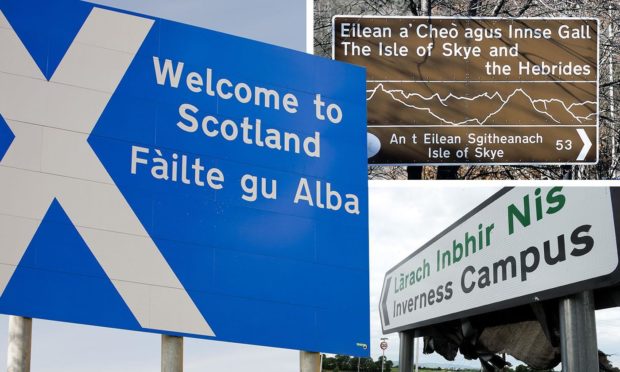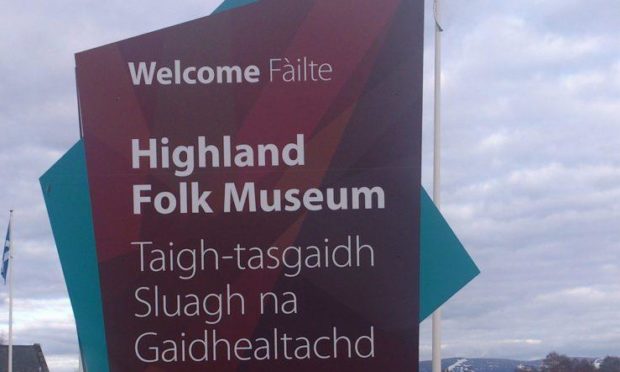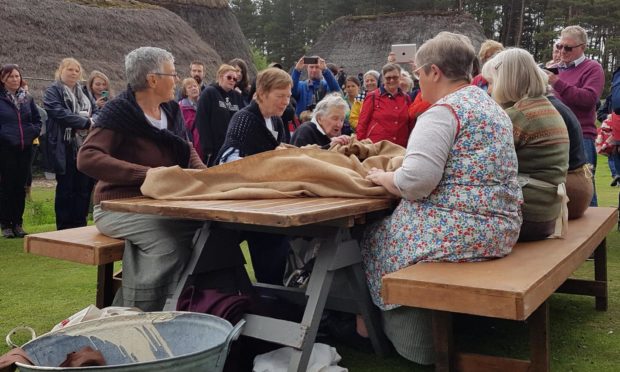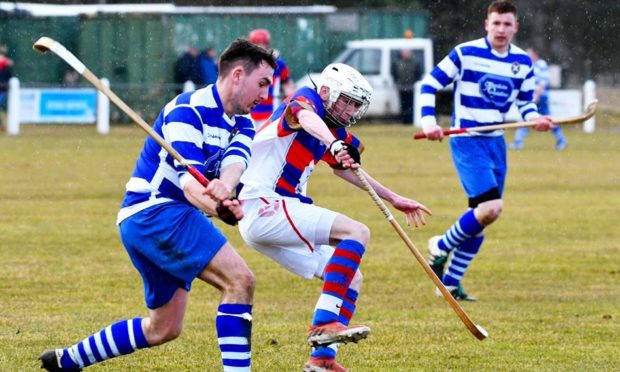The influence of the Gaelic language and culture is evident across many aspects of Scottish life, from the naming of landmarks to playing shinty.
But it is also seen as an economic asset, with visitors increasingly keen to learn about local culture and the success of shows like Outlander fuelling the interest.
The Cairngorms National Park Authority (CNPA) is urging firms to increase the use of the language to add interest and meaning for the two million annual visitors to the scenic area.
It has launched an interpretation toolkit to advise on the use of Gaelic, whether it is a few words or phrases or more comprehensive use of the language.
The guide says that when used effectively, Gaelic can be a useful asset in engaging the audience by creating a unique sense of culture, people and place.
70% of firms using Gaelic said it helped make them stand out
According to research by Highlands and Islands Enterprise (HIE) in 2014, Gaelic is worth between £82 million-£149 million annually to Scotland’s economy.
A total of 70% of firms using Gaelic said it was an asset which helps make businesses more distinct, stand out from its competition and makes it appeal more to target audiences.
VisitScotland figures also show that 51% of people visiting Scotland were interested in Gaelic or Gaelic culture.
Dr Fiona MacLean, CNPA board member and cultural heritage professional, said: “The park authority has always been keen to promote Gaelic and this is something we’ve been keen to do for a while.
“The interest in Gaelic has grown over the years and Outlander has certainly helped. There is a desire to have a better understanding of the culture.
“When used effectively, Gaelic can be a useful asset in engaging the audience by creating a unique sense of culture, people and place.
“It gives us a uniqueness and provides something that is more authentic as it’s part of our identity.
“People look for authenticity, they want to know about the identity of a place they go to, and don’t want it to be the same as everywhere else they go.
“That gives us a unique selling opportunity which we can promote.”
Beginner’s guide to Gaelic
The CNPA is also offering a beginner’s guide to help visitors learn words.
It includes greetings: fàilte (welcome), madainn mhath (good morning) and feasgar math (good afternoon).
There are also place names like beinn (mountain, hill pinnacle, high place), cnoc (hill, knoll, hillock, eminence), creag (rock, crag, cliff, precipice) and eilean (island).
The Highland Folk Museum uses Gaelic in signs, leaflets and guide books.
At the Newtonmore attraction, visitors can be greeted in Gaelic and at numerous events, including Outlander Days, visitors can hear a local group singing in Gaelic while ‘waulking the cloth’.
The group performed a song in an episode of Outlander that was filmed at the museum.
Gaelic psalms are played in the museum church and the language is discussed in the school by the teacher, while the attraction also hosts storytelling events in Gaelic.
A previous project, the Shinty Trail launched last year and was a forerunner of the heritage interpretation toolkit.
It tells the story of the sport in Badenoch and its deep-rooted connections with other aspects of traditional Highland culture in the area.
The Shinty Trail project was led by Bruce MacDonald, who also headed the interpretation project for the CNPA.
He said: “Gaelic terms and phrases can be incredibly descriptive, nuanced and evocative for visitors.
“Language is all around us in one form or another and its use by both communities and businesses can bring much more depth and interest to a project, therefore creating a more distinctive, authentic experience for visitors.”



